

News
SpaceX Starlink launch suffers last-second scrub, ULA up next [update: double scrub]
Update: ULA has scrubbed today’s NROL-44 launch attempt after the weather at the launch site substantially worsened. The Delta IV Heavy rocket’s next shot at launch is now scheduled no earlier than 11:58 pm EDT (03:58 UTC), Tuesday, September 29th, just two hours after a SpaceX Falcon 9 is scheduled to launch the US military’s fourth upgraded GPS III satellite.
SpaceX’s eleventh Starlink launch of the year was scrubbed ~30 seconds before liftoff by bad weather, likely delaying the mission a few days and leaving ULA’s latest Delta IV Heavy launch attempt next in line.
Scheduled to lift off at 10:22 am EDT on Monday, September 28th, SpaceX’s 12th operational Starlink launch (V1 L12) nearly made it to liftoff before the company called the mission off, prioritizing mission success above all else. Given that SpaceX’s Starlink program puts the company in the unique position of being its own launch customer, the decision to let a relatively mild weather violation delay a Starlink mission by at least a few days is unintuitively encouraging.
It’s no secret that SpaceX has become the most successful private launch company in history and a commercial force to be reckoned with, handily overtaking United Launch Alliance (ULA) and Arianespace to acquire a vast majority of the commercial launch market share. Falcon 9 is on track to become the fastest commercial rocket in history to cross the 100-launch milestone and SpaceX is already well on its way to regularly out-launching entire countries with 20+ missions per year. The single biggest risk facing the company is arguably complacency and an infamous tendency known as “launch fever.”
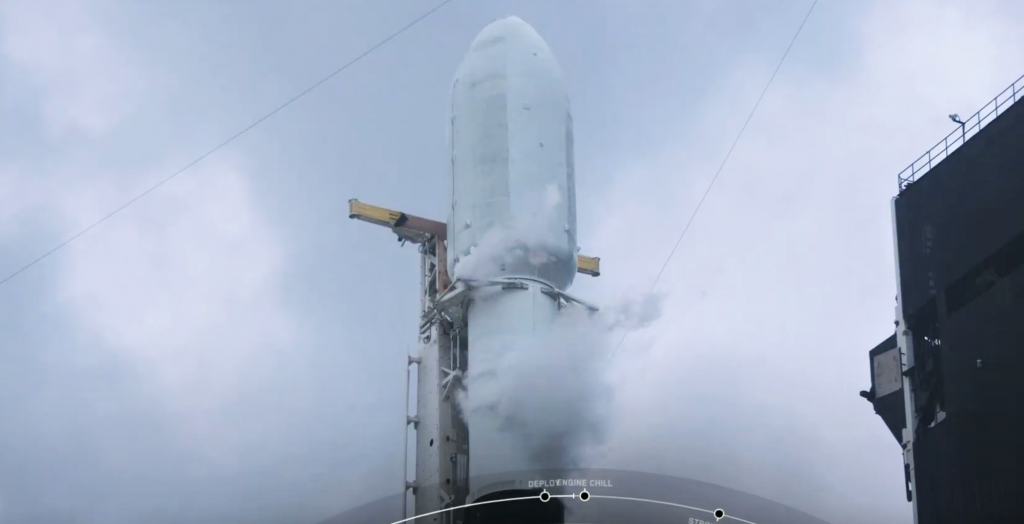
At the cutting edge of spaceflight, constant, exhaustive vigilance is ultimately the only thing standing between a reliable rocket or spacecraft and catastrophic failure. Perhaps the single biggest threat to that vigilance is the somewhat understandable desire to avoid launch delays – a fact of life for rocketry that nevertheless costs time, money, and (to some) reputation. The term “launch” or “go fever” was originally colloquialized to describe the irresponsible managerial pressure to launch largely responsible for both of NASA’s catastrophic Space Shuttle failures.
Some (if not most) parts of SpaceX almost assuredly would rather avoid launch delays. The fact that the company continues to accept Starlink launch delays and respect Falcon 9’s limits strongly implies that SpaceX has found ways to prevent launch fever while still pushing the envelope of launch cadence and rocket reuse. Starlink-12, for example, was originally meant to launch on September 17th but was delayed ~10 days by strong ocean currents before being scrubbed seconds before launch on September 28th. Combined with the fact that SpaceX is technically free to accept more risk on its own Starlink launches, compounded delays will inevitably test the limits of any organization’s resolve.
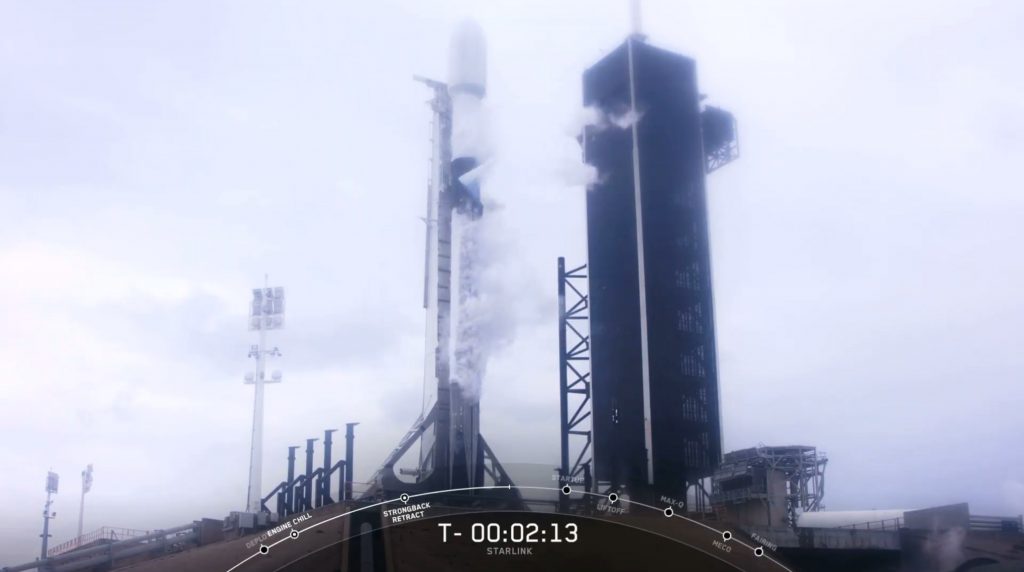
While the argument that SpaceX is technically the only direct stakeholder in Starlink missions is a bad-faith argument that could easily be made to push for increased risk tolerance, it’s only true in a vacuum. A Falcon 9 failure during a Starlink launch would still have major consequences for all of SpaceX’s customers, particularly delaying critical NASA astronaut and US military launches until a lengthy accident investigation is completed. SpaceX executives and managers involved in launch go/no-go decisions clearly understand this and act accordingly.
Starlink-12 will likely be recycled for another launch attempt sometime after ULA’s next Delta IV Heavy launch attempt and probably after SpaceX’s own GPS III SV04 mission for the US military, scheduled no earlier than (NET) 12:02 am EDT (04:02 UTC) and 9:55 pm EDT (01:55 UTC), September 29th, respectively. Catch ULA’s latest NROL-44 launch attempt at the company’s official webcast below.
Check out Teslarati’s Marketplace! We offer Tesla accessories, including for the Tesla Cybertruck and Tesla Model 3.
News
Tesla opens massive solar Supercharger station in California
The Supercharger opened to customers ahead of Fourth of July weekend, while Tesla continues phase two of construction on the site.
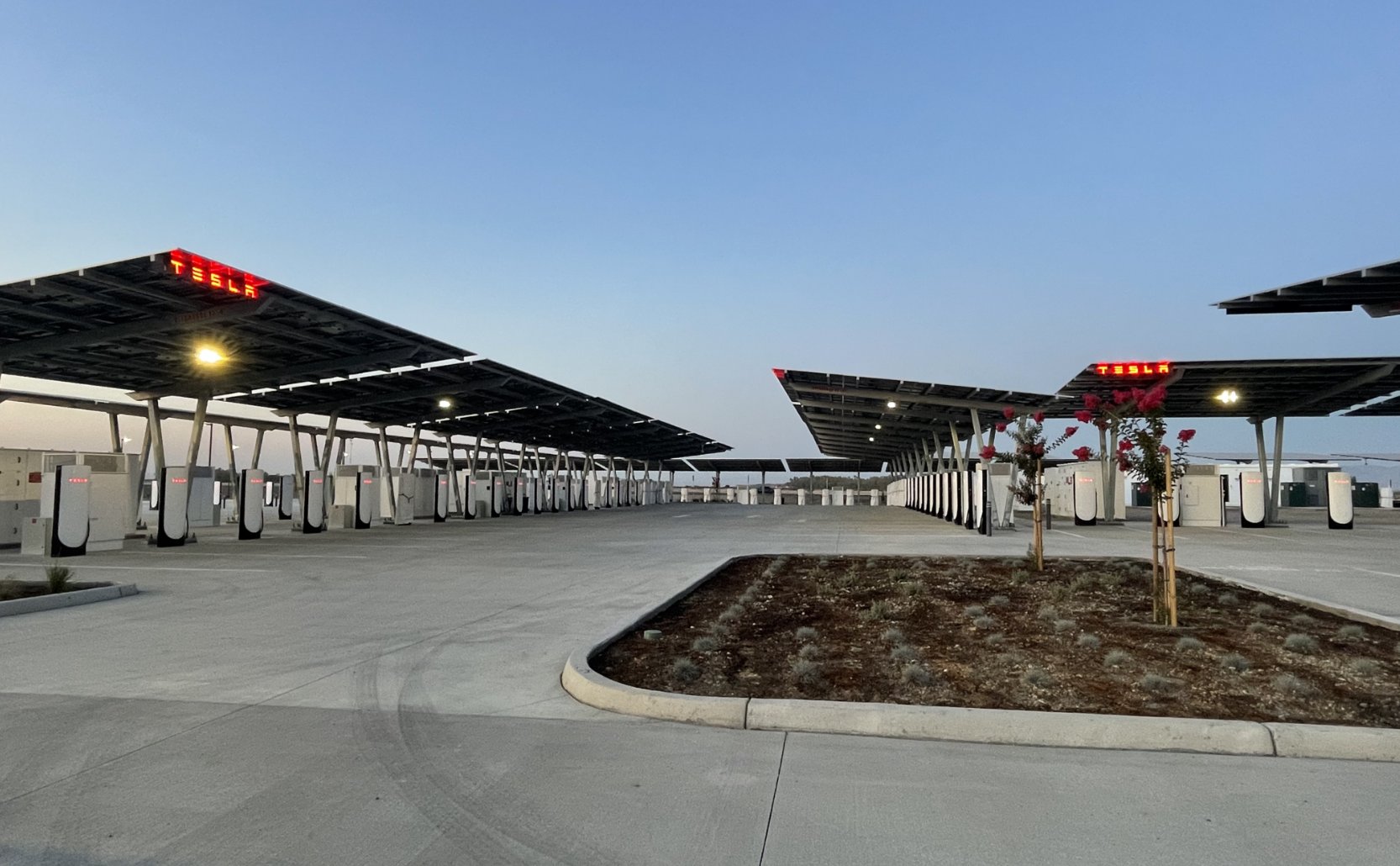
Tesla has officially launched the first several Supercharging posts at a massive station in California, notably including solar canopies and grid-scale batteries to offer completely renewable charging.
Last week, Tesla announced on X that it opened the first 84 Supercharger stalls of a planned 168-stall station in Lost Hills, California. Additionally, the massive Supercharger project features 11MW of solar canopies and 10 Megapack batteries for off-grid charging powered entirely by solar energy.
Tesla completed the first phase of the project just days ahead of the busy Fourth of July holiday weekend, adding that initial construction took just eight months. In addition to the remaining charging stalls, Tesla says it’s building a set of lounge areas, renderings of which can be seen below alongside current photos of the site.
Notably, the site also includes V4 charging posts for the company’s latest available charging speeds, and it’s located near the busy junction between I-5 and Highway 46 in Kern County.
“Thank you [Kern County] and [PG&E] for collaboration and approvals,” Tesla wrote in a follow-up post.

Credit: Tesla Charging | X
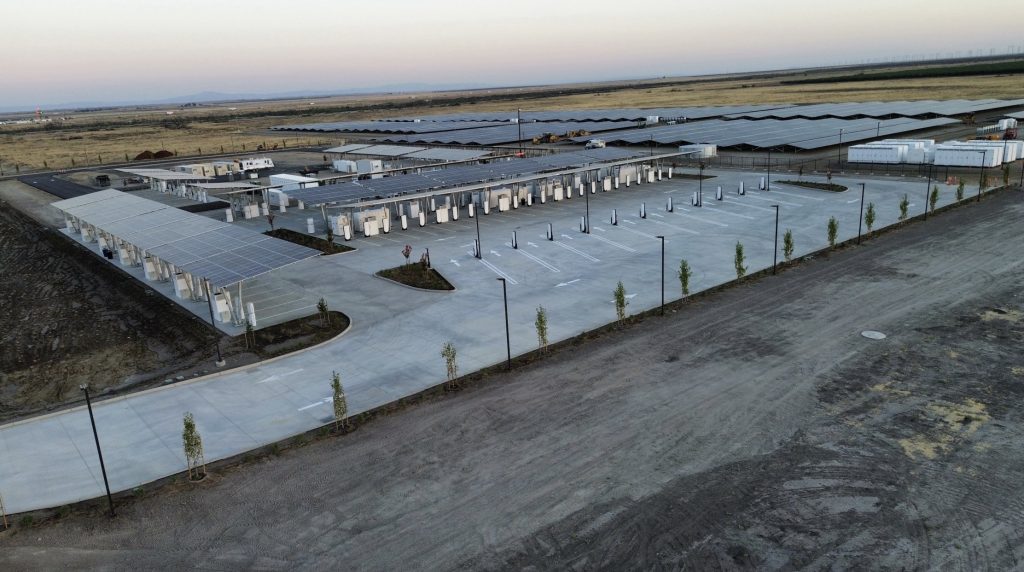
Credit: Tesla Charging | X

Credit: Tesla Charging | X

Credit: Tesla Charging | X
Tesla Supercharger Maps for North America, Europe, and Asia pic.twitter.com/0U5r0XRPyo
— TESLARATI (@Teslarati) July 2, 2025
READ MORE ON TESLA SUPERCHARGERS: Tesla launches ultra-fast V4 Superchargers in China for the first time
Testing at the LA Diner, plus Musk update on potential Tesla solar Gigafactory
The huge Tesla Supercharger station completed phase one of construction fairly quickly, especially given how long Tesla has been working on its unique Los Angeles diner, drive-in, and Supercharger location. Still, the company was seen performing some testing at the nearly-completed charging station earlier this month, and will reportedly be holding a job fair.
Elon Musk also responded on Monday morning to a post on X, suggesting that Tesla is “thinking about” building a U.S.-based solar Gigafactory in order to help support increased power needs with AI growth, and to bolster domestic solar production.
Tesla is building a new UFO-inspired Supercharger in the heart of Alien country
News
Tesla driver walks away from major accident with minor injuries
The driver sustained only minor injuries, and the exact cause of the crash remains under investigation.
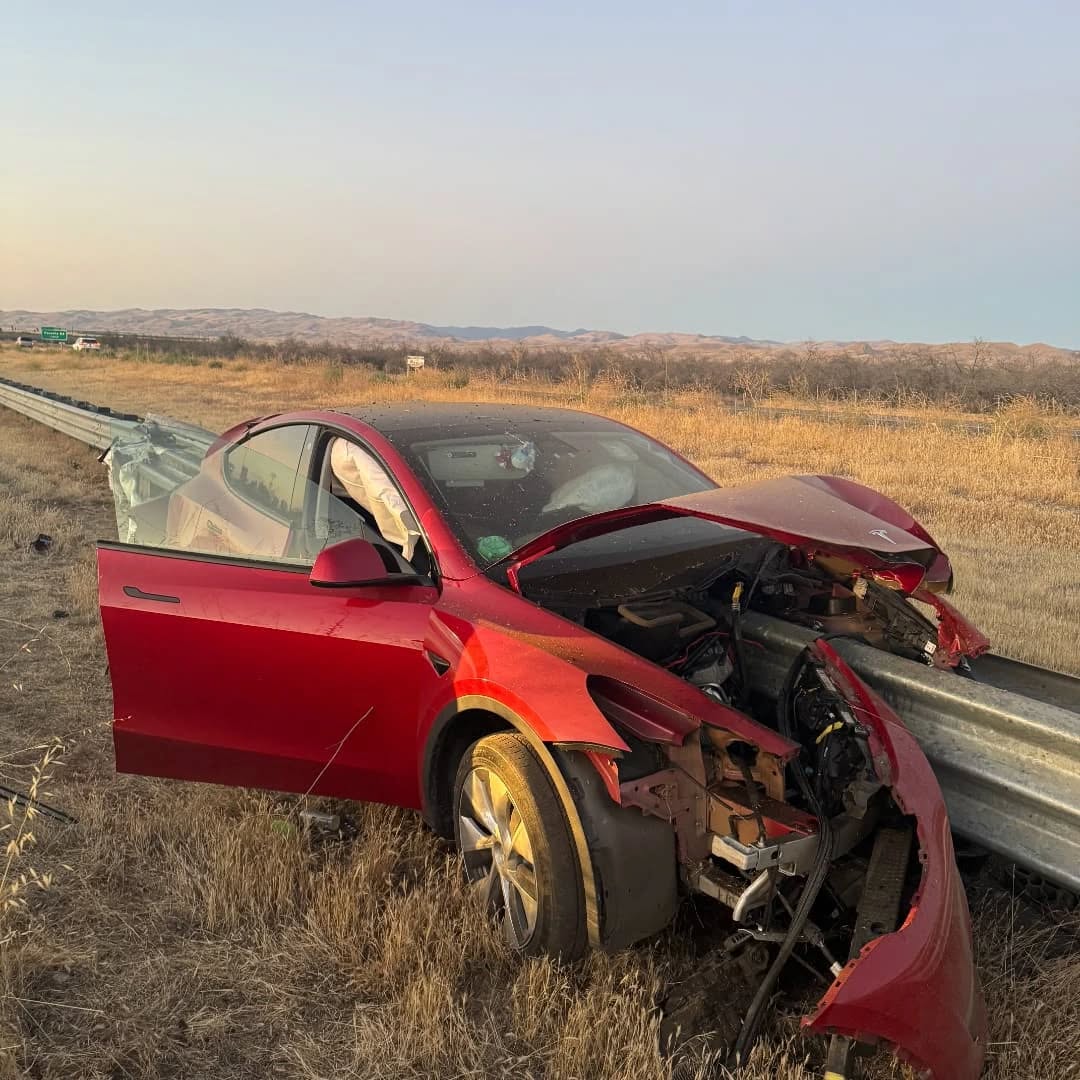
The driver of a Tesla Model Y survived and walked away from a harrowing accident on Monday in California, only sustaining minor injuries despite the vehicle being impaled by a guardrail.
On Monday morning around 4:34 a.m., the Los Banos division of the California Highway Patrol (CHP) responded to the accident on I-5 near Panoche Road, involving a 23-year-old in a Tesla Model Y. According to a post on social media, the driver veered off the road for unknown reasons in the northbound lane, before crashing directly into the guardrail and impaling the vehicle.
You can read the full message and photos from Los Banos CHP below, as were shared in a Facebook post on Monday afternoon.
This morning a Tesla model y was traveling in the #1 northbound lane of I-5 north of Panoche Rd. For unknown reasons driver allowed V-1 to veer off the roadway, travel through a dirt center divide, and crashed into the fixed metal guardrail. Lucky for the driver he only sustained minor injuries and was able to walk away. Driving a vehicle requires 100% attention to the road. Avoid distractions and focus on driving.

Credit: CHP Los Banos (via Facebook)
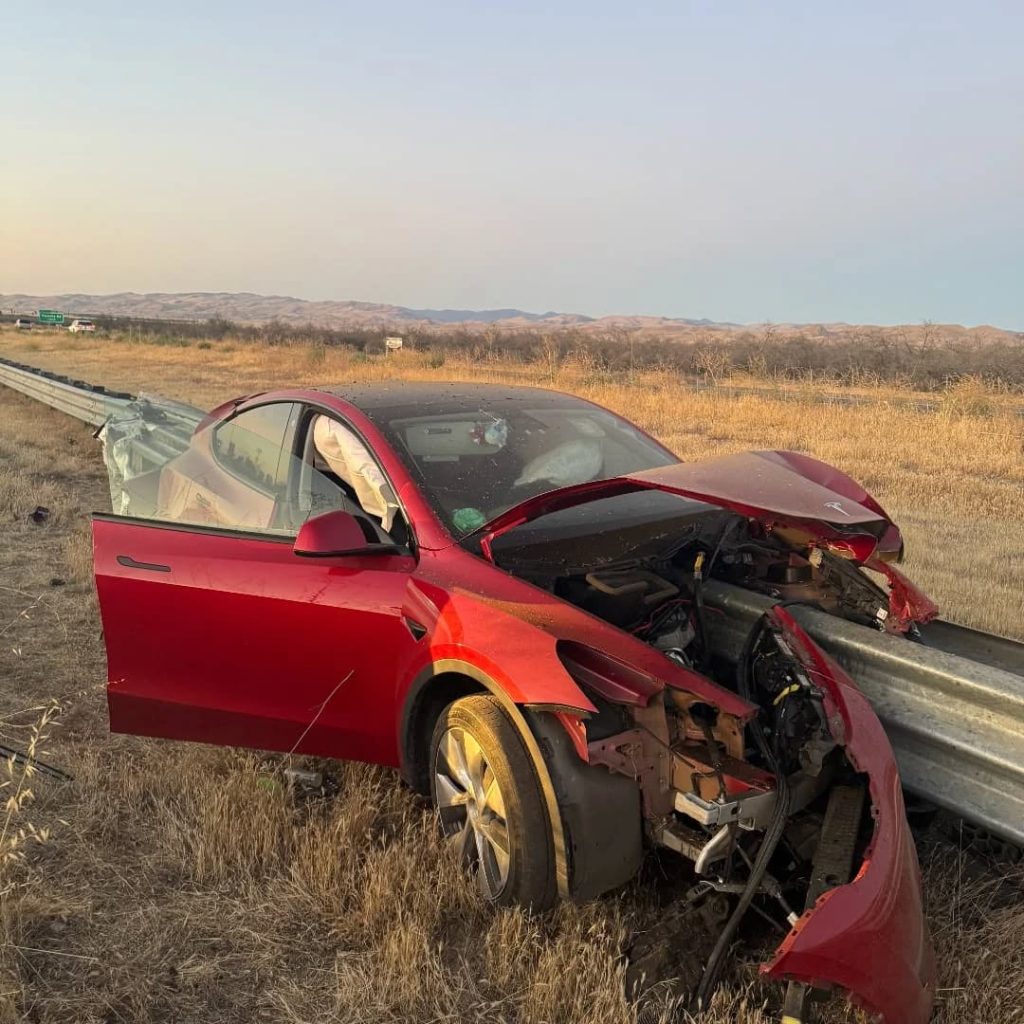
Credit: CHP Los Banos (via Facebook)
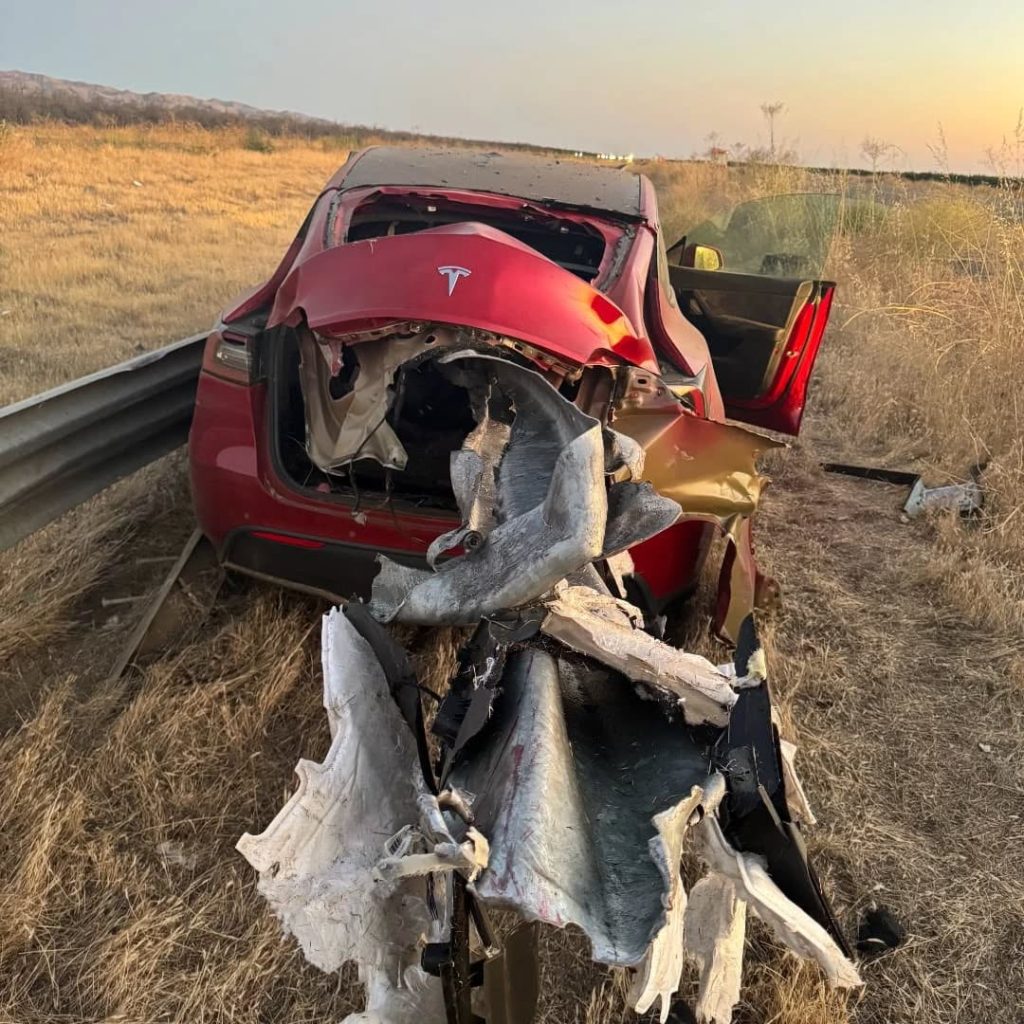
Credit: CHP Los Banos (via Facebook)
In a statement to SFGate, CHP officer Myles Anderson said that the driver only sustained minor injuries, while no arrests are made and drugs and alcohol are not suspected to have been involved. The report also notes that Tesla’s “cruise control and lane assistance features” were activated, according to Anderson. However, it’s not entirely clear if this is referring to Supervised Full Self-Driving (FSD), or to the cruise control and lane assist features baked into Autopilot.
At the time of writing, CHP has not yet responded to Teslarati’s request for clarification and additional details on the matter.
Tesla Crash Safety Ratings across its lineup: pic.twitter.com/ny30R7ceji
— TESLARATI (@Teslarati) July 1, 2025
READ MORE ON TESLA SAFETY: Tesla rolls out crucial new safety feature aimed at saving children
The news comes after Tesla has touted its vehicles as incredibly safe for many years. In December, for example, the company highlighted receiving top safety scores from regulators on four different continents throughout the world, including from the National Highway Traffic Safety Administration (NHTSA) and the Insurance Institute of Highway Safety (IIHS) in the U.S.
Tesla has also listed the goal of making its vehicles the safest on the road throughout the years, both in the overall design of its vehicles and in its Autopilot and Full Self-Driving (FSD) programs.
Tesla Model 3 ranks as the safest new car in Europe for 2025, per Euro NCAP tests
Investor's Corner
Cantor Fitzgerald maintains Tesla (TSLA) ‘Overweight’ rating amid Q2 2025 deliveries
Cantor Fitzgerald is holding firm on its bullish stance for the electric vehicle maker.

Cantor Fitzgerald is holding firm on its bullish stance for Tesla (NASDAQ: TSLA), reiterating its “Overweight” rating and $355 price target amidst the company’s release of its Q2 2025 vehicle delivery and production report.
Tesla delivered 384,122 vehicles in Q2 2025, falling below last year’s Q2 figure of 443,956 units. Despite softer demand in some countries in Europe and ongoing controversies surrounding CEO Elon Musk, the firm maintained its view that Tesla is a long-term growth story in the EV sector.
Tesla’s Q2 results
Among the 384,122 vehicles that Tesla delivered in the second quarter, 373,728 were Model 3 and Model Y. The remaining 10,394 units were attributed to the Model S, Model X, and Cybertruck. Production was largely flat year-over-year at 410,244 units.
In the energy division, Tesla deployed 9.6 GWh of energy storage in Q2, which was above last year’s 9.4 GWh. Overall, Tesla continues to hold a strong position with $95.7 billion in trailing twelve-month revenue and a 17.7% gross margin, as noted in a report from Investing.com.
Tesla’s stock is still volatile
Tesla’s market cap fell to $941 billion on Monday amid volatility that was likely caused in no small part by CEO Elon Musk’s political posts on X over the weekend. Musk has announced that he is forming the America Party to serve as a third option for voters in the United States, a decision that has earned the ire of U.S. President Donald Trump.
Despite Musk’s controversial nature, some analysts remain bullish on TSLA stock. Apart from Cantor Fitzgerald, Canaccord Genuity also reiterated its “Buy” rating on Tesla shares, with the firm highlighting the company’s positive Q2 vehicle deliveries, which exceeded its expectations by 24,000 units. Cannacord also noted that Tesla remains strong in several markets despite its year-over-year decline in deliveries.
-

 Elon Musk1 week ago
Elon Musk1 week agoTesla investors will be shocked by Jim Cramer’s latest assessment
-

 News2 weeks ago
News2 weeks agoTesla Robotaxi’s biggest challenge seems to be this one thing
-

 News2 weeks ago
News2 weeks agoWatch the first true Tesla Robotaxi intervention by safety monitor
-

 Elon Musk1 week ago
Elon Musk1 week agoA Tesla just delivered itself to a customer autonomously, Elon Musk confirms
-

 News2 weeks ago
News2 weeks agoTesla Robotaxi rollout proves that Elon Musk still delivers, even if it’s late
-

 Elon Musk2 weeks ago
Elon Musk2 weeks agoxAI welcomes Memphis pollution results, environmental groups push back
-
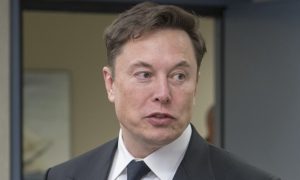
 Elon Musk2 weeks ago
Elon Musk2 weeks agoElon Musk commends Tesla team on successful Robotaxi launch
-

 Elon Musk2 weeks ago
Elon Musk2 weeks agoElon Musk confirms Tesla Optimus V3 already uses Grok voice AI


















